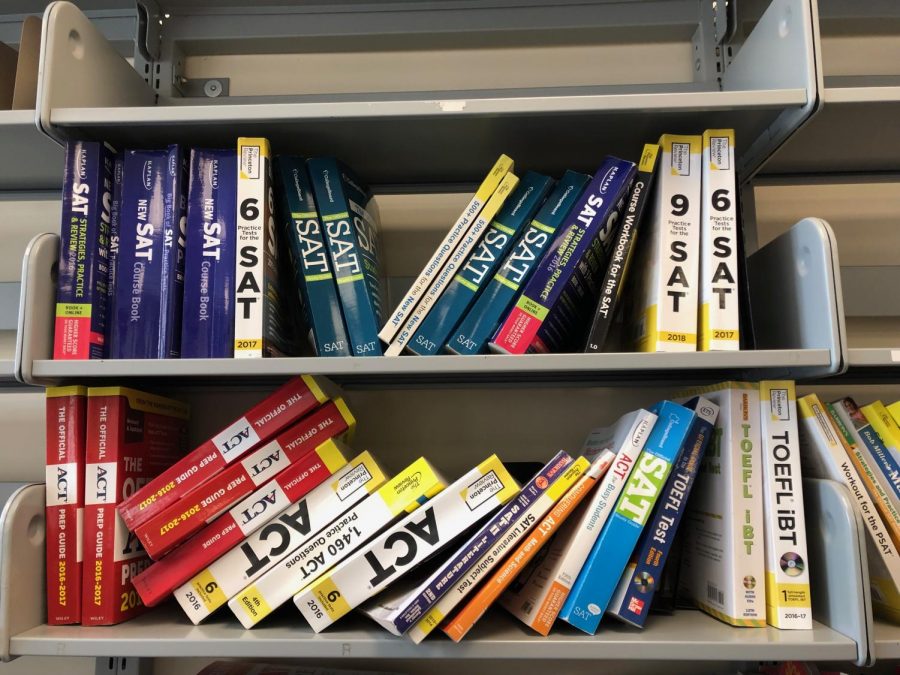My experiences with the college process during COVID-19
College test prep books sit on a shelf in the CIC.
June 9, 2020
Junior year is infamous for AP classes and tests, SATs and ACTs, homework and college visits — or at least it’s supposed to be. When doctors reported the first case of COVID-19 in the US in January, I didn’t think much of it. But then, everything changed so quickly. Our first sign was when the College Board canceled many March SAT locations and postponed their May and June tests. Then, colleges and universities went online. And the tipping point? When Maryland State Superintendent Karen Salmon announced that all public schools in Maryland would be closing mid-March with no instruction for at least two weeks.
At first, I was naive. I thought we would be out of school for a month at most, and that I would go back to school — where I would resume focusing on crew, school and my friends. But I eventually realized that quarantine was the new normal. And once Governor Hogan issued Maryland’s stay-at-home order, which started on March 31, my college panic started to set in.
Though I was able to take the March 15 SAT, I knew subconsciously that it was my last opportunity, and that many other students who were planning to take the June test wouldn’t be able to take it at all. I knew that for many students, test scores are a deciding factor on what schools to look at, and my friends who weren’t able to take the test were anxious about what it would mean for their futures. Thankfully, most colleges have suspended their standardized test requirements, leveling the playing field for all students.
Like many other students, I planned to go on college visits during spring and summer break. But since the campuses are closed, and most of us are not allowed to leave home for non-essential reasons, college visits have to take a backseat. Prospective college students’ days now consist of scrolling through Naviance and looking at stock images of colleges.
With all the uncertainty this virus brings, it’s looking like many of us won’t have many opportunities or time to visit many schools, at least in the near future. We’ll have to make a decision about where to apply without knowing and experiencing some of the most important parts of the school. It’s hard to understand the culture of a school through a screen, and we can’t equate walking through campus with browsing a school’s website.
Of course, I know I’m lucky to have even considered college tours in the first place. Some students even in more normal times only ever have the chance to see colleges on a screen, if that. Some don’t even have the money and resources to attend college at all without amassing debt.
Schools during the pandemic are being sympathetic to those of us who can at least apply. Colleges are providing live Q&As and virtual tours to guide students and to allow them to talk to current students, which is as close as any of us can get to a tour right now. Many universities, including the University of California schools, are also making standardized tests optional for fall 2021 admission, and they’re pledging to be understanding about second semester grades that may be out of our control.
Though I know these actions are extremely important, I and others can’t help but feel confused. Without test scores and concrete junior year grades, it’s harder to predict what we’ll look like to college admissions offices.
It’s a little cliche to say that the future is very uncertain, but it’s the truth. Some experts are claiming that we might have to practice social distancing for the next 18 months; some universities are already revealing a complete move to online learning for the fall 2020 semester.
To other rising seniors, I’d say this: There’s less need to care about a school’s culture when a great deal of it would be through Zoom anyway. Make the best of the information and access you do have, be grateful for the avenues you still can pursue and brace yourselves for an unforgettable — and potentially chaotic — admissions process.










